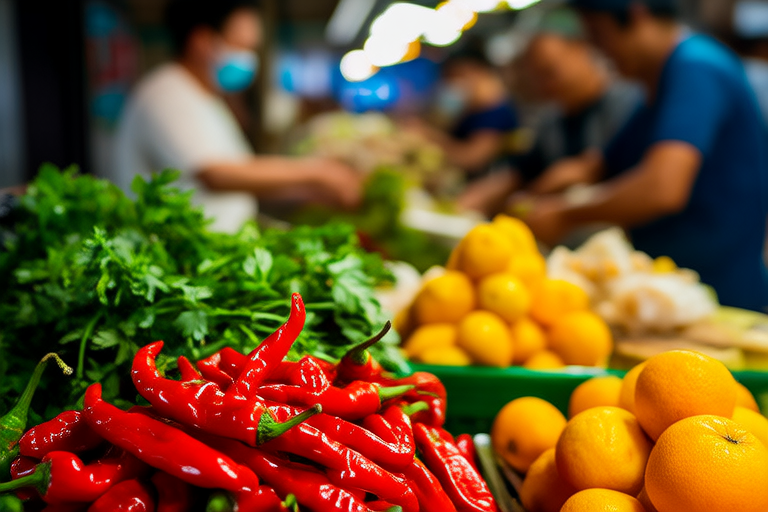From Market to Plate: Exploring Global Cuisine on the Road

“`html
From Market to Plate: Exploring Global Cuisine on the Road
The joy of discovering new flavors while traveling is unmatched. Every bite tells a story, and every meal is a window into the heart of a culture. Whether it’s savoring the spices of India, the freshness of Japanese seafood, or the rich history of Italian pasta, there’s no better way to experience a destination than through its cuisine. This article explores how travelers can immerse themselves in authentic global cuisine by visiting local markets and dining at traditional eateries, uncovering the cultural nuances and traditions behind each dish.
The Journey Begins – Visiting Local Markets
Stepping into a bustling local market is like entering a sensory overload of sights, sounds, and smells. These vibrant hubs are where the best of local produce, meats, cheeses, and spices come together, offering travelers a glimpse into the daily life of a community. Markets like La Boqueria in Barcelona and Tsukiji in Tokyo are legendary for their variety and quality. La Boqueria, for instance, offers everything from fresh fruits and vegetables to cured meats and artisanal cheeses, all reflecting the region’s Mediterranean heritage. Meanwhile, Tsukiji, known for its tuna auctions, showcases the freshest seafood in the world, a testament to Japan’s deep connection with the sea.
These markets not only provide a wealth of fresh ingredients but also highlight regional specialties and seasonal availability. Visitors can expect to find produce that is at its peak, enhancing the flavors of the dishes prepared with them. To navigate these markets safely and effectively, it’s essential to be prepared. Learning basic bargaining techniques and phrases in the local language can go a long way. For instance, in many Asian markets, knowing simple phrases like “How much?” and “Can you give me a discount?” can help secure better deals. Additionally, always be mindful of hygiene practices and follow local customs regarding handling food.
From Market to Kitchen – Preparing Authentic Dishes
One of the most rewarding ways to experience local cuisine is by participating in cooking classes or workshops. These hands-on sessions allow travelers to learn directly from local chefs, gaining insight into the techniques and traditions behind beloved dishes. In Japan, for example, sushi-making workshops are popular, offering participants a chance to master the art of preparing this delicate dish. Similarly, in Italy, pasta-making classes teach the secrets of creating perfect noodles and sauces, often passed down through generations.
These cooking experiences are more than just lessons in technique; they’re cultural exchanges. Participants not only learn how to prepare dishes but also gain an understanding of the cultural significance behind them. Sharing stories and recipes with locals fosters a deeper connection to the place, making the culinary journey even more enriching. Whether it’s learning to make paella in Spain or mastering the art of tandoori chicken in India, these workshops offer a memorable way to engage with the local community and its culinary heritage.
Dining Experiences – Savoring Traditional Eateries
No exploration of global cuisine would be complete without sampling the fare at iconic street food stalls and family-run restaurants. These establishments often serve up the most authentic and delicious meals, providing a true taste of the region. In Thailand, street vendors selling pad thai and mango sticky rice offer a delightful introduction to Thai flavors. In Mexico, taco stands serve up mouthwatering tacos al pastor, showcasing the country’s love for bold spices and fresh ingredients.
Seeking out these hidden gems can sometimes require a bit of effort. Tourist traps are common, but with a little research and guidance, travelers can find authentic spots. Asking locals for recommendations or seeking out places frequented by them is often the best approach. It’s also important to understand the dining etiquette and customs of each culture. In some places, it may be customary to remove shoes before entering a home or restaurant, while in others, tipping might be expected. Being aware of these nuances can enhance the dining experience and show respect for local traditions.
Cultural Insights Through Food
Food plays a central role in shaping cultural identities and social interactions. It reflects historical and economic factors that have influenced dietary habits across continents. For example, the reliance on rice in many Asian countries stems from its suitability for cultivation in the region’s climate. Similarly, the prominence of spices in Indian cuisine is tied to its geography and trade routes. Understanding these connections can deepen one’s appreciation for the dishes being enjoyed.
Food festivals and events also offer unique opportunities to celebrate specific cuisines or agricultural products. In Spain, the Tomato Festival (La Tomatina) in Buñol is a colorful event where participants throw tomatoes at each other. In Italy, the Bologna-based International Cheese Festival celebrates the diversity of cheese-making techniques and products. Participating in such events provides a deeper immersion into the cultural significance of food and the communities that produce it.
Conclusion
The transformative power of immersing oneself in local culinary traditions during travels cannot be overstated. By visiting markets, participating in cooking classes, and dining at traditional eateries, travelers can gain a richer understanding of the places they visit. Each meal becomes a story, each ingredient a link to the past. Embracing the adventure of exploring unfamiliar foods and meeting new people over shared meals is a surefire way to create lasting memories.
We encourage readers to embark on similar journeys of discovery through global cuisine. Whether you’re a seasoned traveler or a curious first-timer, there’s always something new to learn and taste. So pack your bags, grab your appetite, and set off on a culinary adventure that will leave you hungry for more.
“`